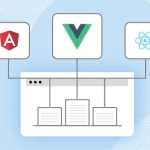Best guide on the Core Web Vitals and how do they impact SEO?
Core Web Vitals is a set of performance metrics that measure the user experience of a website.
These metrics were introduced by Google in May 2020 and include three key factors:
- Largest Contentful Paint (LCP): This measures the loading performance of a web page and reports the time it takes for the most significant piece of content on the page to load.
- First Input Delay (FID): This measures the interactivity of a web page and reports the time it takes for a user to be able to interact with the page.
- Cumulative Layout Shift (CLS): This measures the visual stability of a web page and reports the amount of unexpected layout shift that occurs during the loading process.
These Core Web Vitals are important for website owners and SEOs because Google has announced that they will be using them as a ranking factor in their search algorithm starting from June 2021. Websites that score well on these metrics are more likely to rank higher in search results, while websites that perform poorly may see a drop in their rankings.
It’s worth noting that Core Web Vitals are just one of many factors that Google uses to rank websites, and they are not the only thing that website owners and SEOs should focus on. However, they are becoming increasingly important, and website owners should take steps to ensure that their websites meet these performance standards to provide a better user experience for their visitors and to maintain their rankings in search results.
Largest Contentful Paint (LCP)

Largest Contentful Paint (LCP) is one of the Core Web Vitals metrics that measure the loading performance of a web page. It reports the time it takes for the most significant piece of content on the page to load and become visible to the user. The most significant piece of content is usually an image, video, or block-level element such as a paragraph or heading.
LCP is important because it is a key indicator of the user’s perception of a website’s loading speed. Websites with a fast LCP score are more likely to provide a better user experience and are more likely to rank higher in search results.
According to Google, a good LCP score is less than 2.5 seconds. A score between 2.5 and 4 seconds needs improvement, and a score above 4 seconds is considered poor. To improve LCP, website owners can optimize images and other content, reduce server response time, and implement techniques such as lazy loading and content delivery networks (CDNs) to speed up the loading of large files.
By focusing on improving LCP, website owners can provide a better user experience for their visitors, improve their website’s performance, and maintain or improve their rankings in search results.
First Input Delay (FID)

First Input Delay (FID) is one of the Core Web Vitals metrics that measure the interactivity of a web page. It reports the time it takes for a user to be able to interact with the page after clicking on a link or button. FID is important because it measures the user’s perception of a website’s responsiveness.
A good FID score is less than 100 milliseconds, while a score between 100 and 300 milliseconds needs improvement, and a score above 300 milliseconds is considered poor. To improve FID, website owners can optimize the website’s JavaScript code, reduce third-party scripts and dependencies, and use web workers to offload tasks from the main thread.
FID is particularly important for websites that require user interaction, such as e-commerce sites, web applications, and forms. A slow FID score can lead to a frustrating user experience, lower engagement, and a decrease in conversions.
By optimizing FID, website owners can improve their website’s performance and provide a better user experience for their visitors, which can lead to increased engagement and conversions. Additionally, Google has announced that FID will be a ranking factor in their search algorithm starting in June 2021, so improving FID can also help maintain or improve a website’s rankings in search results.
Cumulative Layout Shift (CLS)

Cumulative Layout Shift (CLS) is one of the Core Web Vitals metrics that measure the visual stability of a web page. It reports the amount of unexpected layout shift that occurs during the loading process. CLS is important because it measures the user’s perception of a website’s visual stability.
Layout shift occurs when a web page’s content moves or shifts unexpectedly while it is still loading. This can be caused by a variety of factors, such as images or ads that load after the rest of the page, or content that is dynamically inserted or resized. These shifts can be frustrating for users and can lead to a poor user experience.
CLS is reported as a score between 0 and 1, with a score of 0 indicating no layout shift and a score of 1 indicating a significant layout shift. A good CLS score is less than 0.1, while a score between 0.1 and 0.25 needs improvement, and a score above 0.25 is considered poor. To improve CLS, website owners can ensure that all images and ads have fixed dimensions, reserve space for dynamically inserted content, and prioritize loading above-the-fold content.
By improving CLS, website owners can provide a better user experience for their visitors and improve their website’s performance. Additionally, Google has announced that CLS will be a ranking factor in their search algorithm starting in June 2021, so improving CLS can also help maintain or improve a website’s rankings in search results.
Summary
Core Web Vitals are a set of performance metrics that measure the user experience of a website. These metrics were introduced by Google in May 2020 and include Largest Contentful Paint (LCP), First Input Delay (FID), and Cumulative Layout Shift (CLS).
LCP measures the loading performance of a web page, FID measures the interactivity of a web page, and CLS measures the visual stability of a web page. These metrics are important for website owners and SEOs because Google has announced that they will be using them as a ranking factor in their search algorithm starting from June 2021.
To improve these metrics, website owners can optimize images and other content, reduce server response time, optimize JavaScript code, reduce third-party scripts and dependencies, and prioritize loading above-the-fold content.
Improving these metrics can help provide a better user experience for visitors, improve website performance, and maintain or improve a website’s rankings in search results.





